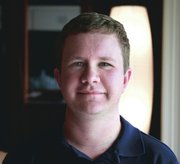Hundreds of thousands of Americans identify as transgender, and experts in biology and psychology across the country disagree on why.
The question has taken on national significance amid political and court battles at the local and federal levels over how to treat transgender children and adults in schools, the armed forces and places of business.
Gender dysphoria
The American Psychiatric Association defines this condition, the clinical term for transgender identity, by the following characteristics:
• A marked difference between an individual’s expressed or experienced gender and the gender others would assign to him or her, lasting at least 6 months.
• The difference causes significant distress or functioning in work, social life, school or other important areas of life.
• Gender dysphoria replaces gender identity disorder; the new term is meant to leave behind the stigma of the term disorder while still enabling people with the condition to get medical treatment.
A transgender person is referred to by his or her identified gender; for example, a transgender man was designated female at birth but identifies as male.
Source: Staff report
It comes down to gender identity, the deep, persistent sense of belonging to one gender or another, along with all of the social patterns and behaviors it entails.
Elizabeth Petray was raised with short haircuts and expectations to act like a boy, wear boy's shoes and play with other boys. Yet some of her earliest memories are of some deep sense that she didn't belong in the same category.
"It felt like it took a lot more effort to make people think I was a boy," she said at St. Martin's Episcopal University Center in Fayetteville one Sunday afternoon in June. Her childhood wish to have been born with a female body grew more intense until she concluded she was transgender at 19 and "a lot of baggage fell off."
The American Psychological Association, American Psychiatric Association and many researchers have come to see transgender identity as genuine. Among this group, many scientists argue whether gender identity is biologically encoded, perhaps in DNA or the brain's structures, or whether other factors are in charge.
"There are a number of ideas about where gender identity comes from and, to make things more complicated, gender identity may not result from the same influences in all people," Sari van Anders, an associate professor at the University of Michigan who studies sexual diversity and the interplay of hormones and neurology, wrote in an email interview. "We still don't know."
Some experts say transgender people aren't helped by accommodating their identity, which they say should be treated as a mental disorder.
"The idea of sex misalignment is simply mistaken -- it does not correspond with physical reality," Paul McHugh, a Johns Hopkins University professor of psychiatry, wrote in a 2014 Wall Street Journal column in which he compared transgender identity to eating disorders.
Charged debate
Gender is ubiquitous in humans' lives even before they learn the words for boy and girl, said Anne Fausto-Sterling, professor of gender studies and biology at Brown University who has researched biological and psychological development among children and related topics for decades.
It's embedded from birth in names, displayed by haircuts, clothing and wall colors, and reflected in others' reactions to all of the above.
Gender's importance and the debate over whether it must match anatomy at birth have fueled controversy across the United States, where transgender people number about 1.4 million, according to a report in June from the Williams Institute at the University of California, Los Angeles.
On one hand, the Obama administration in May urged public schools to allow transgender students to use the bathroom of their gender identity, saying it considers doing otherwise sex discrimination. The military also ended its ban on transgender service members.
On the other, North Carolina and other states' governments have sought to require transgender people to use facilities corresponding with their birth certificate's listed gender. North Carolina's law is being challenged in court. Arkansas and other states have sued over the transgender student directive, and a federal district judge in Texas issued an injunction in August against the policy as the lawsuit goes on.
In Arkansas, debate over city ordinances that prohibit businesses from discriminating against transgender people in Fayetteville and elsewhere has often included arguments from opponents who say gender has lost its meaning.
"Somebody can change their mind this afternoon" about his or her gender identity, making it impossible for employers or businesses to keep up, state Sen. Bart Hester, R-Cave Springs, said in a January interview. Hester sponsored an act last year to prohibit anti-discrimination ordinances like Fayetteville's, though whether the state law does so is being contested by the city at the Arkansas Supreme Court.
Teri Wright, a transgender woman in West Fork, said her identity didn't come on a whim. She struggled as a young child to understand why boys acted more rough-and-tumble than she did, she said. She was teased as being gay as she grew up, and her mother would tell her not to act so girly.
"I never could get the guy thing down even when I tried, but I still tried," Wright said. "But it was an act, and it was difficult to do."
Wright and other transgender people in Northwest Arkansas described their internal sense of gender as something like a deep current in their minds, a tug toward the gender they instinctually felt they belonged to, or a basic assumption about themselves that they had as far back as they can remember. That undercurrent wouldn't go away, they said, no matter how they altered their behavior.
"I had the feeling almost like there were two of me," said Noah Meeks, vocational services coordinator for the Arkansas Support Network, referring to whom he was seen as, a girl, and whom he believed as a Christian he was supposed to be. He envisioned a boy inside his mind who wasn't allowed to grow up until Meeks was already an adult. "He was just screaming and banging on a glass wall, trying to get out."
Looking inward and outward
Researchers who support a biological, inborn cause behind gender identity point to a simple fact of development in the womb: The genitals don't develop under the guidance of sex hormones at the same time as the brain.
Some factor could get between the two, allowing the hormone testosterone to cause the formation of testes while cells in the brain miss or essentially ignore the hormone and connect in ways more typical of girls, for example, regardless of whether the sex chromosomes are XX for female or XY for male.
"There are lots of other theories, but this one seems to make the most sense to me," said Dane Whicker, a researcher who recently earned a doctorate from Duke University and works at the university's child and adolescent gender care clinic. In other words, there's enough testosterone to guide genital development, but the second wave of the hormone aimed at the brain is interrupted, he said.
Several studies' results have fallen along similar lines. Scientists have found several clusters of brain cells that have some average variation between men and women and, in transgender people, either match with their identified gender or fall somewhere between the typical size or shape seen in most men and in most women.
As another example, genes that make brain cells less sensitive to androgen hormones, including testosterone, were found more often in transgender women, according to a 2009 report in the journal Biological Psychiatry.
Matt Stanford, CEO of the Christian mental health-focused Hope and Healing Center in Houston, said such findings prove a biological basis for transgender identity, despite some Christians' opposition to the identity on moral and religious grounds.
"That's an important thing to know, because Bruce Jenner didn't just wake up one Sunday morning and say, 'I'd like to be a woman,'" he said, referring to the celebrity and former athlete who now goes by Caitlyn. Stanford, who holds a doctorate in behavioral neuroscience, has often written on how to reconcile faith and scientific findings and said he saw gender mix-ups as part of a world flawed by original sin.
Vilayanur S. Ramachandran, director of the Center for Brain and Cognition at the University of California, San Diego, found evidence in 2008 that the brain's map of the body -- the sense of the body's shape and position in space -- more closely matches someone's gender identity.
The study was based on the concept of phantom limbs, in which amputees can still perceive their missing arms or legs. It found many, though not all, transgender people experience the same sensations for the "missing" breasts or genitals that correspond with their identity.
"It's very much a biological thing," said Justine Turnage, a digital marketer and member of Northwest Arkansas' Transgender Equality Network, a support and advocacy group. Before her medical transition, she would look at her body and feel intuitively, "That's not right," she said. She emphasized, though, that someone's gender doesn't dictate how they act or think.
"It doesn't matter what I'm doing, what I'm wearing, how I'm behaving. I am most certainly a woman," Turnage said.
Other researchers have argued nonbiological factors can't be ignored. Findings about brain structure correlations don't apply to all transgender people and sometimes aren't replicated in other studies, van Anders said.
"There is no way to tell the difference between the brain of a male baby or the brain of a female baby," Fausto-Sterling said. "The brain at birth is very, very undeveloped."
The average brain features of men and women tend to match more than they differ even among adults, undercutting research that focuses on those differences and how transgender people compare, Fausto-Sterling said. She preferred looking at brains as mosaics of masculine and feminine pieces rather than set up for one gender or the other.
Cultural and social events, expectations and personal experiences would also play a role in how the brain grows, she said. People speak and act differently toward girl babies and boy babies. Toddlers understand gendered categories as soon as they learn the words for boy and girl, or particularly for mother and father. Children often don't link gender to anatomy until around age 5 or 6, she said.
"My view of it (gender) is that it emerges in bits and pieces and fits and starts, and it's not stable to begin with, either," said Fausto-Sterling. She wrote 2000's Sexing the Body: Gender Politics and the Construction of Sexuality, on the history of the scientific understanding of sex and gender.
External and internal factors feed into or affect each other again and again until it's impossible to untangle what caused what, she said. For instance, a culture's views of gender impact the language it uses to describe and understand gender to begin with, which can affect the brain's structure and gender behavior, and so on.
Fausto-Sterling and others see transgender identity as one piece of humanity's variety. This diversity can be physical as well as psychological: Almost 2 percent of people have DNA or anatomy that doesn't neatly fall in one category or the other and are termed intersex, Fausto-Sterling wrote in "Sexing the Body."
Dale Manning, the local transgender network's president, identified himself as "trans-masculine" instead of outright male, for example. Anh Dao Kolbe, a photographer and social activist, didn't identify as either male or female.
"I always jokingly say labels are for cans," Kolbe said, adding gender is meaningful for many but can be fluid. "As long as you're happy, as long as you're not hurting anybody, especially yourself, what does it matter?"
'Our reality'
The fifth and most recent version of the Diagnostic and Statistical Manual of Mental Disorders, the professional standard published by the American Psychiatric Association, refers to transgender identity as gender dysphoria, a persistent and distressing sense that one's gender doesn't match what others assume or see.
The condition's name was changed in 2013 from gender identity disorder in order to focus on the distress caused by the gender mismatch, and by others' reaction to it, as the concern instead of the identity itself. A dysphoria diagnosis allows transgender people to get counseling, hormones or other treatment, according to the association.
Johns Hopkins' McHugh said researchers and media did a disservice to transgender people "by treating their confusions as a right in need of defending."
"'Sex change' is biologically impossible," he wrote, pointing to higher rates of suicide and other problems among transgender people even after their medical transitions. "Rather, they become feminized men or masculinized women. Claiming that this is a civil rights matter and encouraging surgical intervention is in reality to collaborate with and promote a mental disorder."
McHugh didn't return messages requesting comment this summer at his university number.
Stanford, the Hope and Healing Center CEO, cited similar statistics of depression and other problems being more common among transgender people even after medical treatment, saying science still hasn't found the best way to deal with gender dysphoria.
"Individuals are still quite distressed, they're not able to form proper relationships, and it's a real struggle," he said. He believes allowing children who say they're transgender to act like their identified gender is harmful because gender is more malleable at young ages, he added.
Several transgender people in Northwest Arkansas nonetheless described transitioning to their identified gender as an enormous relief, and the American Academy of Pediatrics recommends health care providers help gender-nonconforming children live "authentically" and find ways to reduce their distress while holding off irreversible treatment methods until adulthood.
Issues such as depression and suicide stem from prejudice, discrimination and violence from society and unsupportive family members, not from being transgender only, according to the National Alliance on Mental Illness, an advocacy group out of Virginia pushing for psychological education for the general public.
"The anxiety drops, the suicide drops, mental health improves" with treatment and support that acknowledge transgender identity as genuine and not a disorder, said Peter Daniolos, a clinical professor of psychiatry at the University of Iowa's pediatric clinic. The opposite -- condemnation or punishment, for example -- "doesn't make you all the sudden snap out of it," he said.
Multiple professional organizations, including the American Psychoanalytic Association, discourage efforts to change someone's gender identity, finding it unnecessary or harmful.
Daniolos works with children and teens to make sure the identity is genuine instead of more common and mostly temporary gender play. If needed, he helps treat their dysphoria in concert with a pediatric endocrinologist, or a hormone specialist, and a family practice doctor.
Appointments are fully booked six months out, he said.
"There aren't a lot of us, so people will travel remarkable distances to try and find me," Daniolos said, adding families and teachers even in the rural, conservative heartland are often supportive of their children in the end. "I have deep compassion for parents who say, 'No way, this can't be.'"
Daniolos and the other professionals discuss a child's gender issues with the family to ensure they aren't a passing phase, he said. Many clients don't end up being transgender. Hormone blockers can be a temporary, reversible way to forestall puberty and its permanent physical changes to allow a child to work out his identity.
Parents and society are more accepting of transgender people these days, but that doesn't mean transgender identity is a recent phenomenon, Daniolos added.
"They were there anyway before, probably leading very miserable, quiet, hidden lives," he said.
Some researchers are moving away from the focus of finding transgender identity's causes because it can create the perception the identity is something needing fixing, van Anders said. Dealing with disproportionate violence, isolation and other issues stemming from transgender identity are often higher priorities, she said.
"For most of the history of research on transgender (people), this has been the exclusive focus," she wrote of the identity's causes. "Increasingly, however, transgender folks have asked for research that benefits their lives or addresses ongoing issues."
Manning, the equality network president, said the "intellectual debate" over the cause of transgender identity might never be solved, not that the idea bothered him too much.
"In the meantime, we still have to live our reality," he said. "We're all just humans, and it doesn't matter who you think we are."
NW News on 09/04/2016



